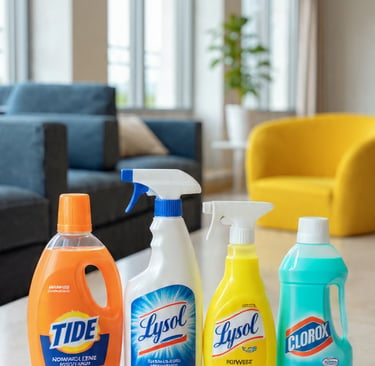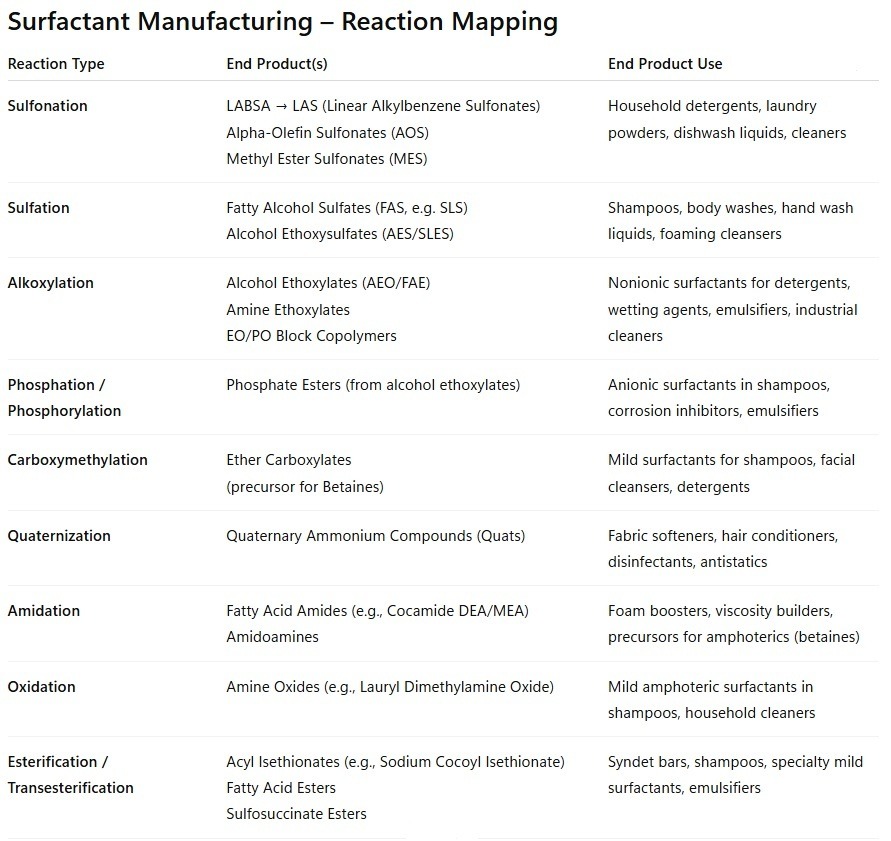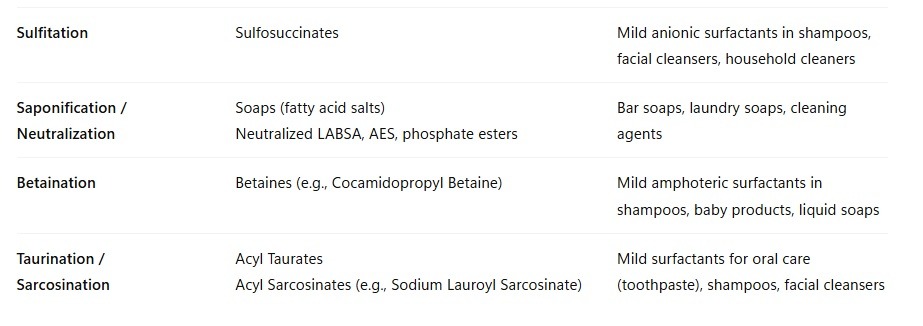Surfactant Technology
Surfactants (short for surface-active agents) are amphiphilic molecules containing a hydrophilic (water-loving) head and a hydrophobic (water-hating / oil-loving) tail. Because of this dual nature, surfactants preferentially adsorb at interfaces (e.g. oil/water, air/water), lowering the interfacial or surface tension. They facilitate emulsification, wetting, spreading, foaming, dispersion, and detergency, and are key components in cleaning products, personal care, industrial formulations, agrochemicals, etc.
On the economic side, the global surfactants market is very large and growing. In 2023, its estimated value was approximately USD 43–48 billion, with forecasts projecting growth to USD 70–80 billion or more by the early 2030s. This growth is driven by rising demand from household cleaners, personal care products, industrial & institutional cleaning, and increasing interest in bio-based and milder surfactants.
Reactions in Surfactant Manufacturing
The production of surfactants relies on a series of well-established chemical reaction engineering (CRE) processes that convert natural oils, fats, and petrochemical feedstocks into functional surface-active molecules. At the feedstock stage, dehydrogenation of paraffins produces linear olefins, which undergo alkylation with benzene to form linear alkylbenzene (LAB), the precursor to LABSA and LAS detergents. In parallel, hydrogenation of fatty acids or esters and hydroformylation of olefins provide fatty alcohols, which serve as the backbone for ethoxylates, sulfates, and phosphate esters.
At the core surfactant synthesis stage, different CRE transformations define the surfactant class: sulfonation produces LABSA, AOS, and MES; sulfation yields SLS and SLES; alkoxylation gives nonionic alcohol ethoxylates; phosphation converts alcohol ethoxylates into phosphate esters; and esterification/transesterification generates sulfosuccinates and acyl isethionates. Specialty surfactants are produced through amidation (fatty amides, amidoamines), quaternization (cationic quats), oxidation (amine oxides), and carboxymethylation / betaination (zwitterionic betaines). Further mild anionics such as taurates and sarcosinates are obtained via taurination and sarcosination reactions. Finally, saponification and neutralization yield traditional soaps and convert acid-form intermediates (e.g. LABSA) into their functional salt forms.
Together, these reaction pathways form the intermediary-to-final surfactant chain, enabling the production of the world’s most widely used detergents, cleaners, and personal care actives.




Introduction uses & market size
Surfactant Reaction Engineering- Reaction Mapping




Global Formulations Consultancy
Chemical Innovation & Technical Excellence
Expert formulation development, process optimization, and technical consulting across multiple industries.
Get in touch with our experts.
Follow
Industries
Household and Industrial Cleaners
Construction
Cosmetics and Personal care
Pharmaceuticals and Healthcare
Aerosols
Fragrance and Flavors
© 2018. All rights reserved.
Services
Chemical Reaction Engineering -CRE
Chemical Process Engineering - CPE
Email : consulting@globalformulation.com
Phone : +91 8169102990
+91 9819548320